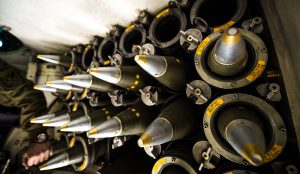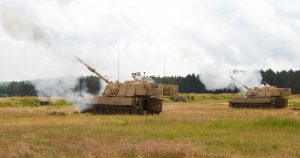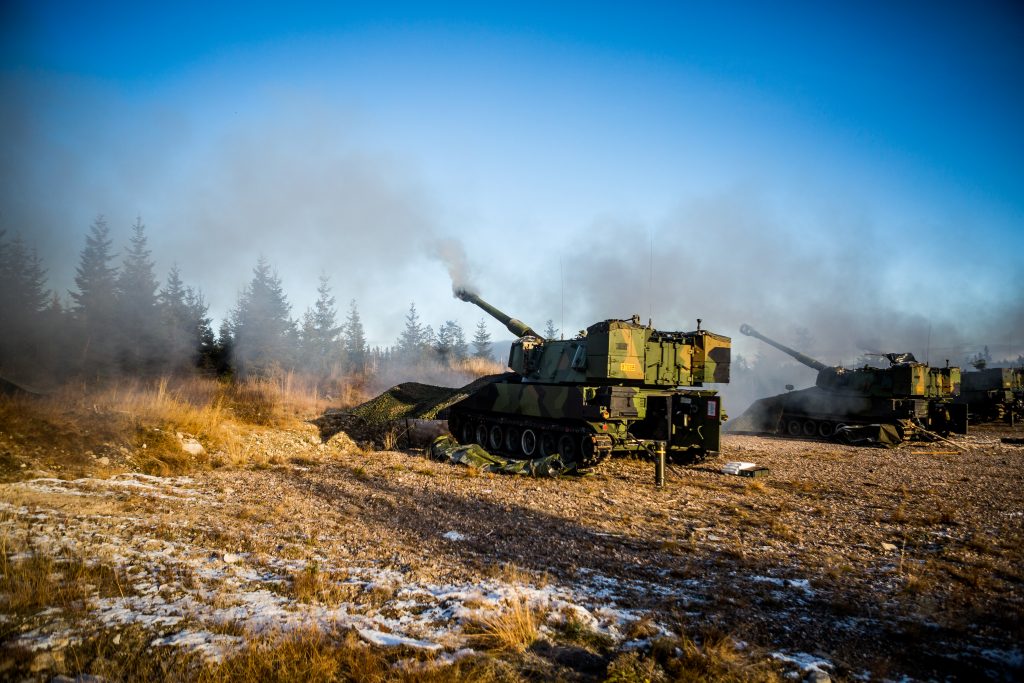You may not have heard of the battle of Zenopillya, Ukraine, in july 2014. But it was a watershed moment that marked the return of Russian artillery power. On July 11, two Ukrainian mechanized brigades, the 24th and 72nd, assembled outside of the town. Their goal was to push back breakaway Russian/separatist forces that had taken control over Luhansk and Donetsk oblasts in the previous months. The Ukrainians, however, were unaware of the artillery units that had massed on the Russian side of the border.
Artillery attack
The first sign that something was about to happen, was a swarm of Russian UAVs overhead. At the same time, cyberattacks against Ukrainian command and control systems were carried out. Not long after, the Ukrainians were decimated by a massive bombardment by Russian BM-21 “Grad” MLRS systems.
Army major general Robert H. Scales (retired) put it this way in the Washington Post when he wrote about the incident: “(…) a single Russian artillery “fire strike” almost destroyed two Ukrainian mechanized battalions in a few minutes.” Col. Liam Collins (the retired former director of the Modern War institute at West Point) also described the effect as devastating: “The attack lasted only two to three minutes, killed at least 30 soldiers and wounded hundreds more. The attack left the Ukrainian forces decimated and demoralized (…)”
Army major general Robert H. Scales (retired)
(…) a single Russian artillery “fire strike” almost destroyed two Ukrainian mechanized battalions in a few minutes.
Russia afterwards denied involvement, but the American government on 24 July 2014 stated that it had evidence that the Russian military was firing on Ukrainian territory from across the border. The U.S. stance was confirmed on 27 July, and the day after, the US State Department published satellite photos showing heavy artillery shelling Ukrainian positions.
Six months later, a similar situation would occur at the town of Debaltseve. Here, a Ukrainian force of around 6000 soldiers were shelled mercilessly by Russian salvos of Grad rockets. Again, the effects were devastating: The Ukrainians suffered heavy losses, had to leave most of their equipment in a disorderly retreat, and were largely destroyed as a fighting force. The United States Department of State said that the Russians had deployed “a large amount of artillery and multiple rocket launcher systems around Debaltseve”, and that “Russia was responsible for shelling of the area.”

Russian troops fire rocket artillery during an exercise at the Luga training ground (Leningrad region), dedicated to Missile Troops and Artillery. Photo: Konstantin Morozov / mil.ru
“Outgunned and outranged”
Russia’s BM-21 Grad systems are certainly not the only ones fielded by the former superpower. The BM-21s have an effective range of 20-45kms (depending on the rockets used). Russia also has access to a large number of other artillery systems:
- 9A52-4 “Tornado” MLRS: up to 90km range
- BM-30 “Smerch” MLRS: 70 to 90km range
- 2S7 “Pion” 203mm heavy artillery: 37,5 to 55km range
- TOS-1 220mm MLRS and thermobaric weapon: 0.5 to 6km range
- 2S19 Msta 152.4mm howitzer: 45 to 62km range
- 2S35 “Koalitsiya-SV” 152.4 or 155mm artillery: 40 to 80km range.
After Russia’s aggression against Georgia in 2008, Ukraine in 2014 and the operations in Syria, NATO has once again been forced to recognize the country as a possible adversary. A thorough analysis of the country’s military capabilities show that NATO would not necessarily fare well in a conflict. A series of war games conducted by the RAND corporation in 2014 and 2015 concluded that NATO could not successfully defend its most exposed members in the Baltics. Artillery – in large numbers – with a much longer range than its western counterparts, advanced aerial defense systems (like the S-400), advanced, well-equipped and numerous armored forces, and extensive electronic warfare capabilities were among the factors giving Russian military the edge.
Several leading U.S. military analysts and officers came to the same conclusion. When asked in a testimony before the Senate Armed Services Committee, U.S. Army Chief of staff, general Mark Milley said: “We don’t like it, we don’t want it, but yes, technically, we are outranged, outgunned on the ground.”

Combat firing of artillery units of the Krasnoselskaya motorized rifle brigade of the WMD (Leningrad region). Photo: mil.ru
Without air superiority
Russia has long emphasized artillery as one of its armed forces’ most important branches. Historically, this goes back to World War II where its predecessor state – The Soviet Union – established a doctrine where artillery played a dominant part.
U.S. and NATO forces have, on the other hand, emphasized air force much more. And in the years where they fought insurgents or terrorists in Afghanistan and the Middle East, air strikes would accomplish many of the coalition goals. These were often precise, heavily dependent on intelligence, carried out against an enemy without air defense systems and managed to minimize collateral damage. Still, such tactics and doctrine were very different from what could be needed against a peer or a near-peer adversary.
“Against insurgents in Iraq or Afghanistan, we’ve seen a situation where NATO has had total control in the skies. Precision, small warheads and low collateral damage have been important. Excalibur strikes are, in my opinion a good example of this: They’ve largely accomplished their goals in an environment where NATO has focused on air dominance, air support and little use of artillery”, says Thomas Danbolt, Nammo’s vice president Large Caliber.
Danbolt is one of the defense industry’s leading experts on large caliber ammunition, and especially long range capabilities within the artillery domain. He points out, however, that NATO’s main commitment as an alliance is still the collective defense of the alliance members. Fighting ISIS, Taliban or other groups has been important. But that focus might change now – reestablishing defense of the member states’ home territory as the alliance’s main priority.
“USA and NATO have had air superiority since World War II. That has been an enormous advantage, and I believe we’ve built a lot of our military thinking around it. But what do you do in a situation where that advantage is smaller or no longer present?”, Danbolt asks.











